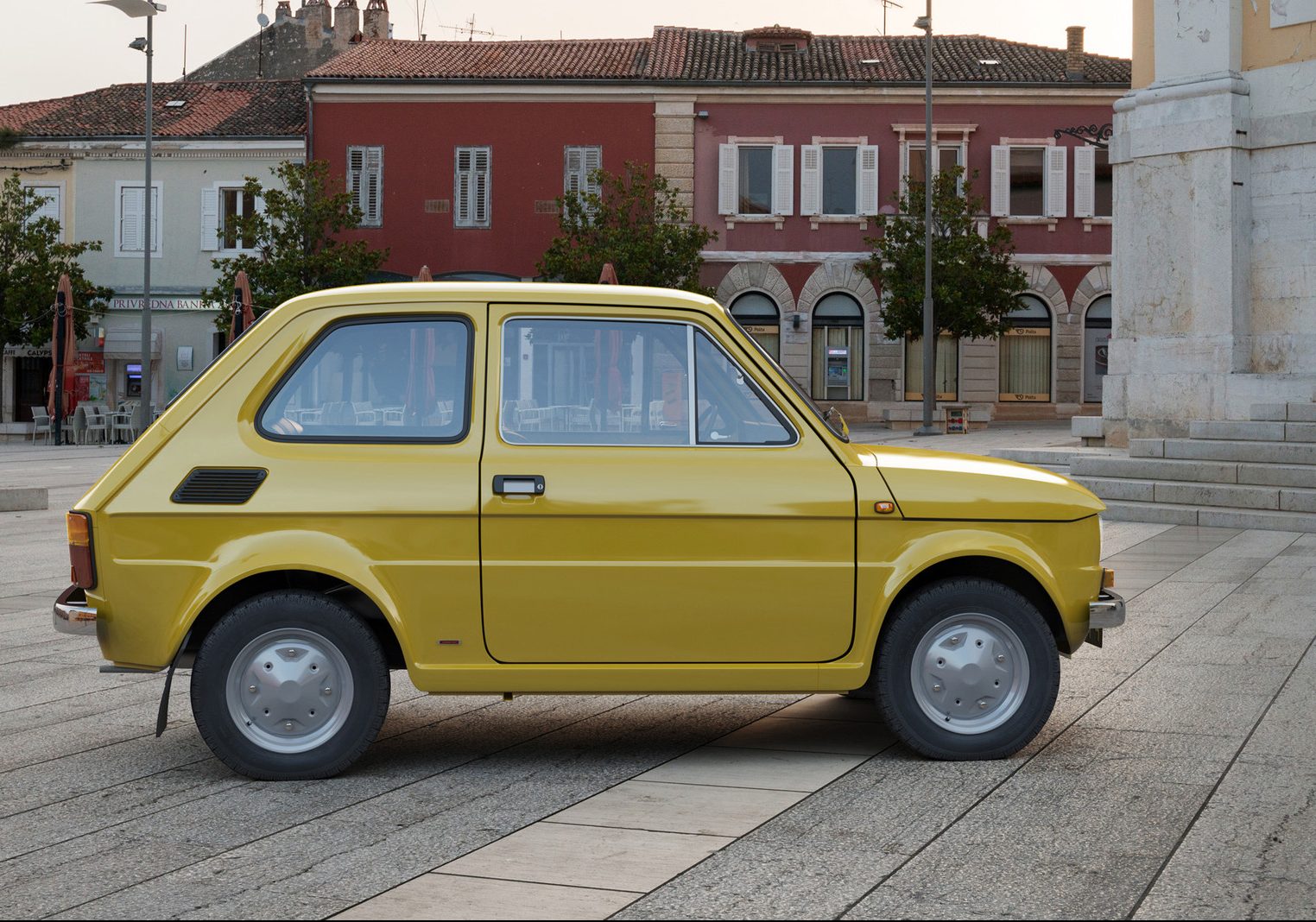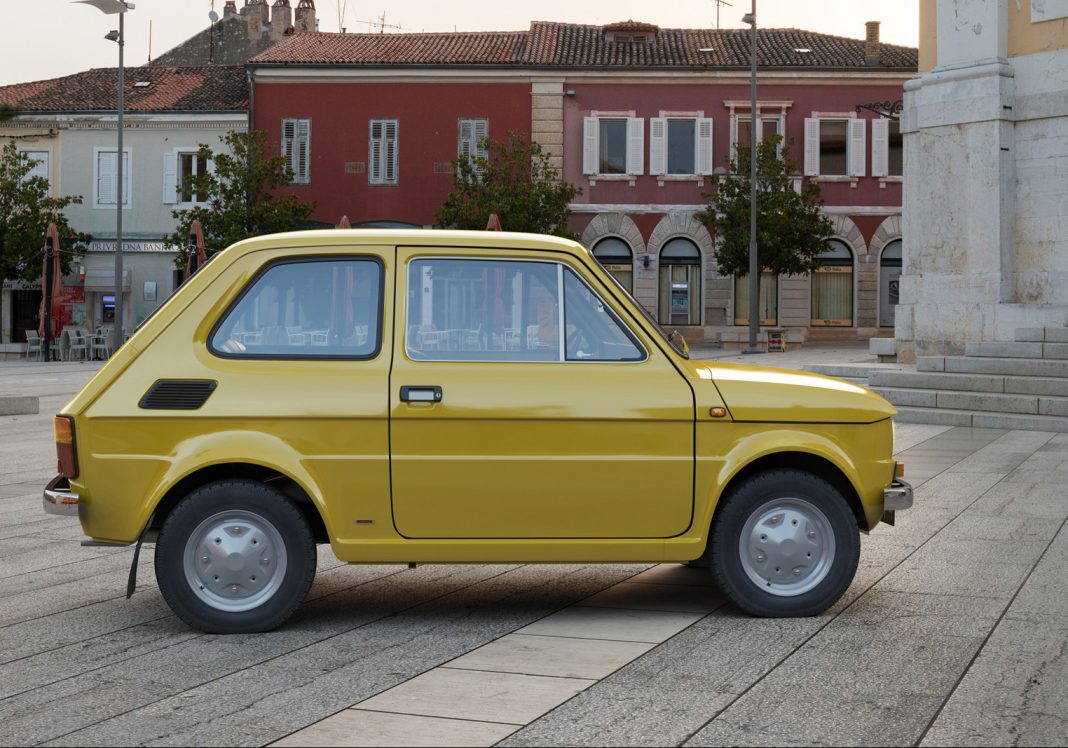
In those days when we lined up for a boat from Mototechnika for years, but the import of new cars was approaching the figure of 100,000 a year, in contrast to the current miserable 30,000, there were models that forever won the hearts of a real motorist. The cars are simpler, spartan, somewhat strange compared to their Western counterparts. But cars are accepted as one of the important members of the family. Among them were really worthy «icon» cars that won the respect not only of drivers from the former socialist camp, but also of those who are behind the «iron wall» …
Polish Fiat 126p
The machine, almost affectionately «small», gained worldwide fame only after the transfer of its production from Italy to Poland. Quite serious courage was then shown by Gianni Agnelli, who, having licensed the FIAT 124 to the Russians, who became larger than our famous Zhiguli, played the small FIAT 126 on the same number of hawks from America, organizing its production in Poland. . This policy continues today with the production of the new FIAT 500 in Belso-Biala. I saw Poles sleeping in a car on the beach in Kiten, despite the impossibility of removing the backs of the front seats. Cubic car design in the 70s of the last century was both attractive and relevant. In Poland, in addition to the «small», a car with great familiarity was also called «brick». The Polish Fiat 126 replaced the classic FIAT 500, retention of rear-wheel drive, two-cylinder engine and rear-wheel drive. The car was produced in Poland between 1973 and 2000 and has fully earned the status of a real automotive icon, with almost 3.5 million units produced.
Skoda 110 R and 130 RS
Sports models were rare in the former Eastern Bloc, but that doesn’t mean they didn’t exist. One of them is the Skoda 110 R, a civilian version of Mlad Boleslav’s famous low-flying arrow, the 130 RS. It was a very aerodynamic sports coupe that kept the formula of the then damage with a rear-mounted engine, which in the 110 R variant had a standard output of 62 hp, which allowed the car to reach a top speed of about 150 km / h. Much more serious was the sports version of the 130 RS, which offered power as high as 200 hp, and in 1975 supplied fuel-injected engines and even 250 hp. These cars have won thousands of fans in our country, watched their performances during the track race in Albena for the World and Friendship Cup of the socialist countries or during their participation in the Golden Sands rally, driven by such pilots as Blanca, Tribold, Shedivy and Kvaiser. From the civilian version, copies of which are still in our country, about 57,000 pieces were produced, and from the 130 RS version to 200.
Melkus RS 1000
This sports car featured unique gull-wing doors and was built by famous GDR driver Ueli Melkus in Dresden from 1969 to 1979. Naturally, the car was developed on the basis of the then well-known Wartburg 353 model, but with a radically different plastic coupe and an engine layout moved to the center of the car. The three-cylinder two-stroke engine of the civilian model was slightly strengthened to 100 hp, but due to its weight of about 850 kg, the car was quite maneuverable — in the latest modifications it lifted even 200 km / h. During 10 years of production, 101 Melkus RS 1000 were produced. this story has a modern continuation — the heirs of the Melkus family and now make a similar car to order, of course, with a modern four-stroke engine and the necessary electronic accessories. .
Wartburg 353
This two-stroke car, named with a little derision and a lot of warmth «Big fart … in Hans», was considered the «top of the tarator» in the former GDR and still trembles on the streets not only in Germany. but also in our country. It started back in 1966, and in 1988 it was completely modernized and technically updated with the help of Volkswagen, receiving a four-stroke gasoline engine. The car used a load-bearing frame and offered sedan and station wagon options.
GAZ-24
This «Volga» is one of the most famous models of the Gorky Automobile Plant, exported mainly to Scandinavia and Belgium. In 1976, the Belgian company Scaldia-Volga released the first versions of the model with a Peugeot diesel engine and a Rover brake system. In the standard version, the car was also the most expensive of those offered for individual purchase by the state-owned Mototekhnika company in Bulgaria.
Tatra T603 and T613
This car has become a worthy continuation of the Czech tradition in the field of luxury automotive. In addition to the extremely aerodynamic coupe, the car impressed with its interesting technical proposals — an air-cooled eight-cylinder V-twin engine located at the rear. Unfortunately, it was not available for private purchase and was used as an executive vehicle for the Czechoslovak State Administration. The second generation of the luxury model was labeled 613 and did not have such an obvious aerodynamic shape, but retained the layout of the first model. An interesting feature of the car is that its engine was developed on a stand at a distance of several hundred hours on gas.
Lada 2107
The most desirable family car in our country before the changes was Zhiguli, and then Lada (www.ladaman.ru/en). The so-called «Classic» in its version 2107 sold well in many countries of the world in a variety of modifications, including right-hand drive and diesel engines. In Egypt, for example, the model was produced three years ago. In Great Britain, Germany, Hungary and Belgium to this day there are numerous clubs of his fans.
Trabant 601
The little «fart … in Hans» was one of the symbols of the former GDR. This cheap, simple and unpretentious plastic machine with a supporting frame has outlived its true longevity and turned into a long-lived conveyor, the production of which lasted 34 years. Front-wheel drive, simple two-stroke, two-cylinder, air-cooled gasoline engine from 18 to 26 hp. made a real people’s car out of it. Towards the end of its existence, like the Wartburg, it again received a second generation with the help of VW, which preceded the amalgamation of the two Germanys, which had a modified coupe and a much more modern and powerful four-cylinder four-stroke engine. water cooled engine.
Lada Niva
This car boldly ranks among the best in world automotive history and is perhaps the pinnacle of Russian automotive engineering. It deservedly bears the laurels of the world’s first self-supporting SUV, and thanks to its interesting design and durability, it is one of the longest-lived in the automotive world, produced almost unchanged for several decades. And something very important — Lada 4×4, as the car is now called, because the popular name Niva (www.vazbook.ru/en/Niva) was sold by Chevrolet to release a jointly produced Chevy-Niva model, next year will be revolutionary updated in accordance with government requirements. modern automotive industry.











